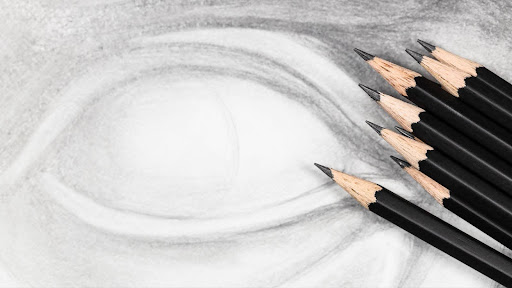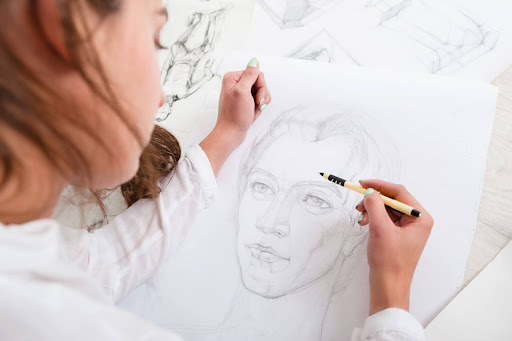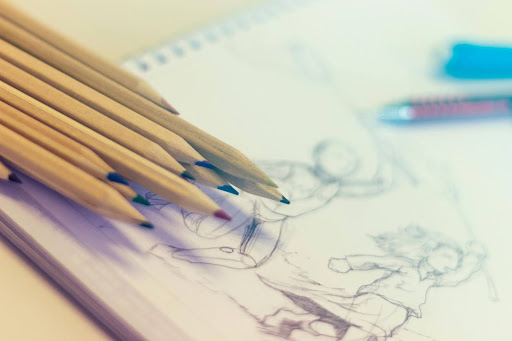
Choosing the Right Drawing Pencil: A Guide for Sketching, Shading and Detail
A good drawing pencil can feel like an extension of your hand. Whether you’re sketching out a rough idea, layering in deep shadows or working on intricate line work, the pencil you choose affects how your marks behave on the page. From graphite to charcoal to coloured options, there’s a world of tools to explore.
At Discount Art & Craft Warehouse we stock a wide selection of drawing pencils for beginners and pros alike. This guide will walk you through the types, grades and techniques to help you find the pencil that fits your creative style.
Understanding the Types of Drawing Pencils
Not all drawing pencils are made the same. Each type is designed to handle different textures, marks and effects depending on the materials inside. Knowing the basics can help you pick the right tool before you even make a mark.
Graphite Charcoal and Coloured Pencils
Graphite pencils are the most common and versatile. They range from hard light leads to soft dark ones that are ideal for shading. Great for everything from quick sketches to fully realised drawings.
Charcoal pencils are darker and softer giving you rich contrast and expressive marks. They can be a bit messier than graphite but are perfect for dramatic effects and textured paper.
Coloured pencils use pigment instead of graphite or charcoal. Some are wax based others oil based. Both types are excellent for layering, blending and vibrant illustrations especially when paired with the right surface.
What the Grades Mean
You’ve probably seen pencil labels like 2H HB or 6B and wondered what they meant. These letters refer to the pencil’s hardness and the type of mark it will leave.
H stands for hard. These pencils make lighter cleaner lines and are great for technical work or initial outlines. The higher the number the harder and lighter the pencil.
B stands for black. These are softer and darker. B pencils are perfect for shading and expressive sketching. The higher the number the softer and darker the mark.
HB sits right in the middle. It’s a balanced pencil often used in schools or for general drawing.

How to Choose the Best Pencil for Your Style
The best drawing pencil depends on what kind of work you’re doing. If you love loose expressive sketches you’ll want something different than if you focus on technical or hyper detailed drawings.
For Sketching and Shading
Sketching often calls for softer pencils like 2B 4B or even 6B. These glide easily and allow for quick fluid mark making. You can cover large areas and create depth with a few strokes. They’re also easier to blend if you like soft shading or tonal studies.
If you’re after a pencil that can handle all your basics without swapping constantly a medium grade like 2B or HB is a solid everyday choice.
For Line Work and Fine Details
Detail work usually needs harder pencils like H or 2H. They hold a sharper point and produce cleaner lines. That’s useful when drawing hair architectural lines or delicate features that need to stay crisp.
Using a range of grades together can give your drawings more contrast and dimension. Lighter pencils for outlines and heavier ones for shadows or texture lets you build complexity one layer at a time.
For Sketching and Shading
Sketching often calls for softer pencils like 2B 4B or even 6B. These glide easily and allow for quick fluid mark making. You can cover large areas and create depth with a few strokes. They’re also easier to blend if you like soft shading or tonal studies.
If you’re after a pencil that can handle all your basics without swapping constantly a medium grade like 2B or HB is a solid everyday choice.
For Line Work and Fine Details
Detail work usually needs harder pencils like H or 2H. They hold a sharper point and produce cleaner lines. That’s useful when drawing hair architectural lines or delicate features that need to stay crisp.
Using a range of grades together can give your drawings more contrast and dimension. Lighter pencils for outlines and heavier ones for shadows or texture lets you build complexity one layer at a time.

Techniques to Get the Most from Your Drawing Pencils
Once you’ve got your pencils sorted it helps to know a few techniques that bring out their full potential. Good pencil work isn’t just about the tool – it's also about how you use it.
Blending and Layering for Depth
Graphite is great for layering. Start with a light touch then build shadows gradually. You can blend with a tissue cotton bud or blending stump. Just be careful not to overwork it or your drawing can lose contrast.
Some artists prefer crosshatching instead of smudging for a cleaner look. Either way the key is control. Let the pencil do the work and take your time building tone.
Creating Contrast with Pencil Grades
Using a full range of pencils in a single drawing can give it more life. Hard grades like H are ideal for fine outlines or light shading. Medium grades like HB or 2B work well for form and texture. Soft grades like 6B create drama and depth with their dark velvety marks.
Keep a few grades on hand so you can switch depending on what your drawing needs. It’s a simple way to add clarity and structure to your art.

Discover our range of high quality drawing pencils for every artistic need
From student sets to professional pencil collections Discount Art & Craft Warehouse has everything you need to bring your ideas to life. Whether you’re just starting out or looking to refine your tools, our selection includes graphite charcoal and coloured pencils designed for artists of every level. Once you’ve found your favourites you’ll wonder how you ever drew without them. Explore our range today.
